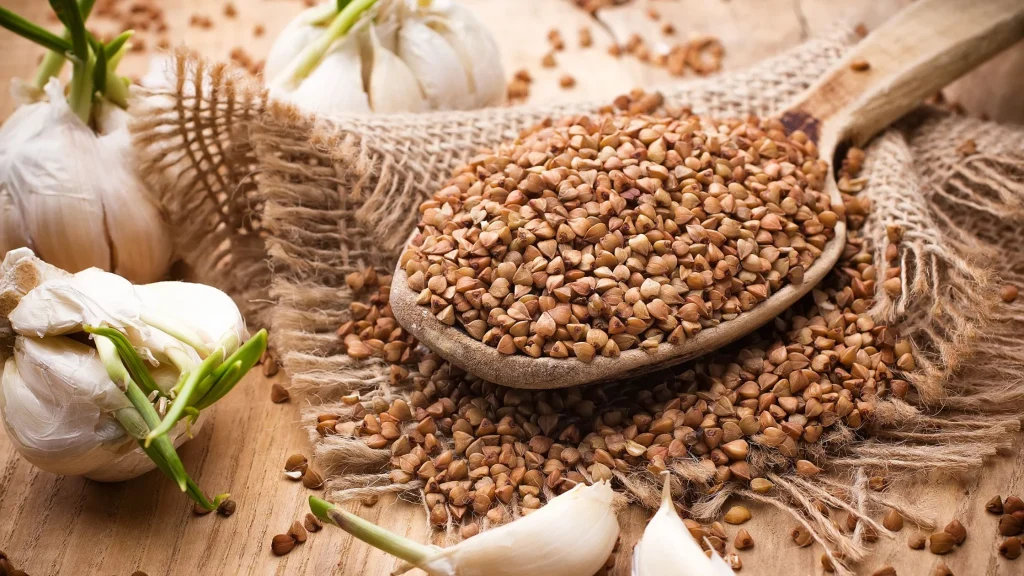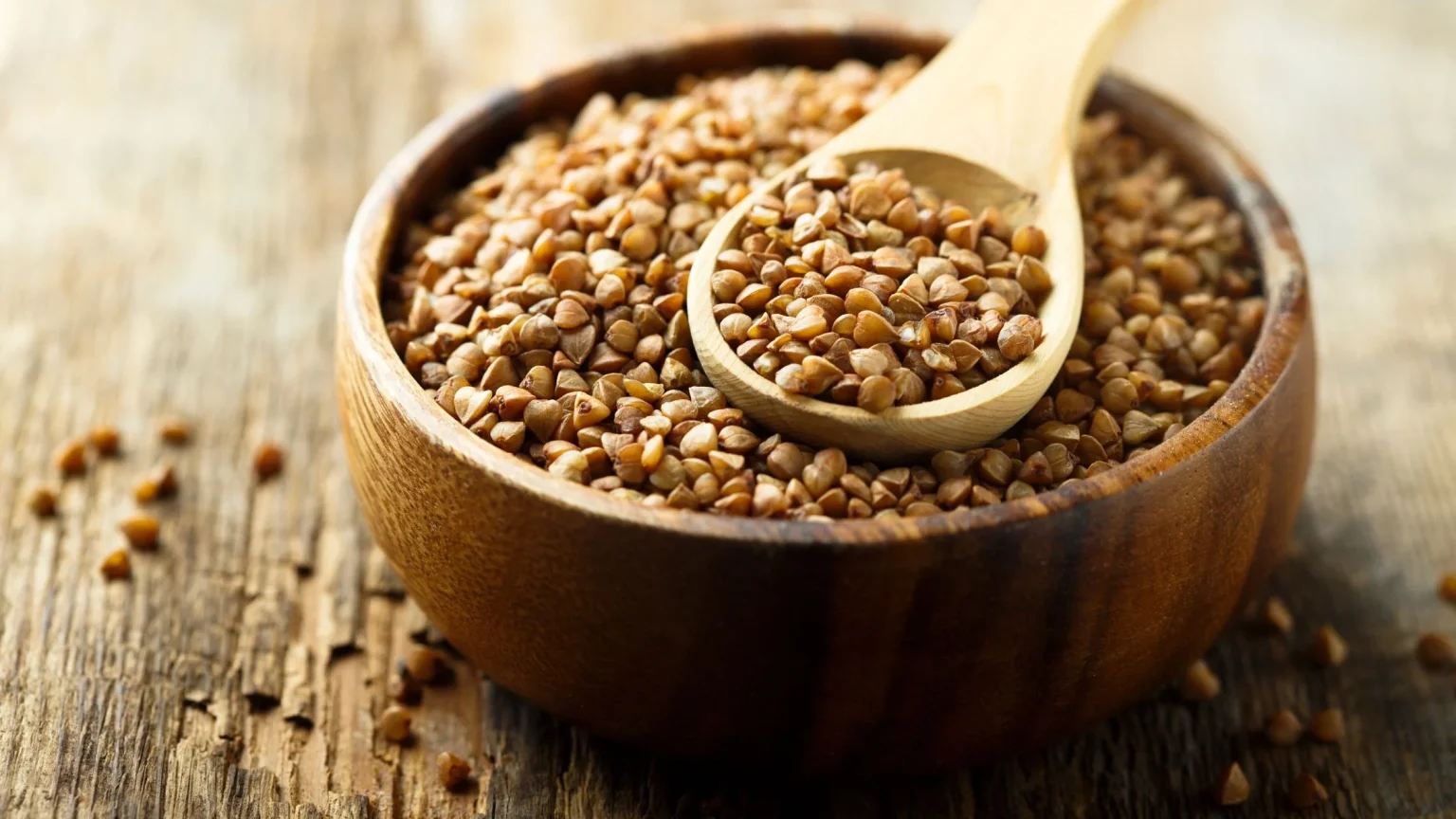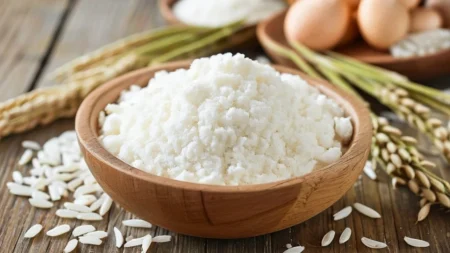Buckwheat is a versatile and nutritious pseudocereal that has gained popularity in recent years. Often mistaken for a grain, buckwheat is actually the seed of a flowering plant related to rhubarb. Known for its gluten-free properties and unique nutty flavor, buckwheat offers a range of health benefits and culinary applications. This article will explore the origins, nutritional profile, and culinary uses of this versatile ingredient.

Key Takeaways
- Buckwheat is a nutritious pseudocereal, not a true grain.
- Buckwheat is gluten-free and has a distinctive nutty flavor.
- Buckwheat is rich in antioxidants, supports heart health, and aids digestion.
- Buckwheat can be used in a variety of culinary applications, from groats to flour.
- Buckwheat is a popular choice for those following a gluten-free diet.
What is Buckwheat?
Buckwheat is a versatile and nutritious pseudocereal that has been cultivated for thousands of years, with its origins tracing back to Central Asia. While often mistaken for a grain, buckwheat is actually the seed of a flowering plant belonging to the Polygonaceae family, which is related to rhubarb. Botanically, buckwheat is classified as Fagopyrum esculentum.
Origins and History
The history of buckwheat dates back to ancient times, with evidence of its cultivation found in various regions of Central Asia. This hardy, resilient crop has been a staple food for many cultures, providing a valuable source of nutrition and sustenance. Over the centuries, the cultivation and consumption of buckwheat have spread to other parts of the world, making it a globally recognized and widely-used ingredient.
Botanical Classification
Buckwheat is not a true cereal grain, but rather a pseudocereal, meaning it is the seed of a flowering plant that is used similarly to a grain. Botanically, buckwheat is classified as Fagopyrum esculentum, a member of the Polygonaceae family. This family also includes other well-known plants such as rhubarb and sorrel, all of which share a distinctive triangular-shaped seed or fruit.
Nutritional Profile
Nutritionally, buckwheat is a rich source of various essential nutrients. It is high in protein, fiber, and a range of B vitamins, as well as important minerals like magnesium, phosphorus, and zinc. This unique nutrient profile makes buckwheat a valuable addition to a balanced and healthy diet, providing a wealth of benefits to those who incorporate it into their culinary repertoire.
| Nutrient | Amount per 100g |
|---|---|
| Protein | 13.3g |
| Fiber | 10.0g |
| Magnesium | 168mg |
| Phosphorus | 338mg |
| Zinc | 2.6mg |
| Vitamin B6 | 0.5mg |
| Folate | 21μg |
Health Benefits of Buckwheat
Buckwheat is associated with a variety of health benefits due to its nutrient-dense profile. One of the key advantages of buckwheat is its rich content of antioxidants, which can help protect the body against oxidative stress and reduce the risk of chronic diseases.
Rich in Antioxidants
Buckwheat is known to be an excellent source of antioxidants, particularly rutin and other flavonoids. These powerful compounds can help neutralize free radicals, preventing cellular damage and reducing inflammation in the body. Consuming buckwheat regularly can contribute to overall health benefits and a reduced risk of conditions like heart disease, cancer, and cognitive decline.
Supports Heart Health
Buckwheat is also beneficial for heart health due to its ability to promote healthy cholesterol levels and support normal blood pressure. The fiber, magnesium, and other nutrients in buckwheat can help maintain cardiovascular function and reduce the risk of heart-related complications.
Aids Digestion
The fiber content in buckwheat is particularly beneficial for digestion. This nutrient helps to regulate bowel movements, prevent constipation, and maintain a healthy gut microbiome. Incorporating buckwheat into the diet can contribute to improved digestive health and overall well-being.
Buckwheat in the Kitchen
Buckwheat is a versatile ingredient that can be utilized in a variety of culinary applications, from savory dishes to delectable baked goods. Whether you’re exploring the nutty flavor and distinct texture of buckwheat groats or experimenting with buckwheat flour recipes, this pseudocereal offers a world of culinary possibilities.
Cooking with Buckwheat Groats
Buckwheat groats, the whole, unprocessed kernels of the buckwheat plant, can be cooked and incorporated into a wide range of dishes. These nutritious buckwheat groats can be used to create hearty pilafs, savory casseroles, and even comforting breakfast porridges. Their nutty flavor and chewy texture make them a versatile addition to both savory and sweet preparations.
Buckwheat Flour Recipes
Buckwheat flour is a gluten-free alternative that can be used to create a variety of baked goods, from light and airy buckwheat flour pancakes and waffles to dense and flavorful breads and pastries. The unique nutty taste and robust texture of buckwheat flour lend themselves beautifully to both sweet and savory recipes, allowing home cooks and professional chefs alike to explore new culinary frontiers.
| Buckwheat Groats | Buckwheat Flour |
|---|---|
| Whole, unprocessed kernels of the buckwheat plant | Finely ground buckwheat seeds, a gluten-free flour alternative |
| Used in savory dishes like pilafs, casseroles, and breakfast porridges | Incorporated into baked goods such as pancakes, waffles, breads, and pastries |
| Nutty flavor and chewy texture | Unique nutty taste and robust texture |
Buckwheat for Gluten-Free Diets
Buckwheat has become a popular choice among those following a gluten-free diet, as it is naturally free of gluten. This makes it an excellent alternative to traditional wheat-based grains for individuals with celiac disease or gluten sensitivity. Buckwheat flour, buckwheat groats, and other buckwheat-based products provide a versatile and nutritious option for gluten-free cooking and baking.
Understanding Celiac Disease
Celiac disease is an autoimmune disorder in which the ingestion of gluten, a protein found in wheat, barley, and rye, triggers an immune response that damages the small intestine. This can lead to a range of symptoms, including abdominal pain, bloating, diarrhea, and malnutrition. For individuals with celiac disease, a strict gluten-free diet is the only effective treatment, making buckwheat gluten-free products an essential part of their dietary management.
Gluten-Free Buckwheat Options
The growing awareness of celiac disease and the increasing demand for gluten-free buckwheat products have led to an expansion of buckwheat gluten-free offerings in the market. Consumers can now find a wide range of buckwheat gluten-free options, including buckwheat flour, buckwheat groats, buckwheat noodles, and even buckwheat-based baked goods, providing a versatile and nutritious solution for those with gluten sensitivities.
Conclusion
Buckwheat is a versatile and nutritious pseudocereal that offers a range of health benefits and culinary applications. From its origins in Central Asia to its growing popularity as a gluten-free ingredient, buckwheat continues to captivate health-conscious consumers and chefs alike.
Whether used in its whole form or as a flour, buckwheat is a versatile and nutritious addition to any diet, providing essential nutrients, antioxidants, and a unique nutty flavor. Its benefits summary includes supporting heart health, aiding digestion, and being a rich source of antioxidants, making it an excellent choice for those seeking a nutritious and gluten-free option.
As the demand for buckwheat continues to rise, it is clear that this ancient pseudocereal has firmly cemented its place as a valuable and versatile ingredient in the modern kitchen and for health-conscious consumers. From savory dishes to sweet baked goods, the culinary possibilities of buckwheat are endless, making it a must-try for those seeking to expand their culinary horizons.
FAQ
What is buckwheat?
Buckwheat is a versatile and nutritious pseudocereal that is often mistaken for a grain. It is actually the seed of a flowering plant related to rhubarb, known for its gluten-free properties and unique nutty flavor.
Where does buckwheat come from?
Buckwheat originated in Central Asia and has been cultivated for thousands of years. Botanically, it is classified as Fagopyrum esculentum, belonging to the Polygonaceae family.
What is the nutritional profile of buckwheat?
Buckwheat is a good source of essential nutrients, including protein, fiber, B vitamins, and minerals like magnesium, phosphorus, and zinc.
What are the health benefits of buckwheat?
Buckwheat is rich in antioxidants, which can help protect against oxidative stress and reduce the risk of chronic diseases. It also supports heart health by promoting healthy cholesterol levels and blood pressure, and the fiber in buckwheat aids digestion and can help maintain a healthy gut.
How can buckwheat be used in the kitchen?
Buckwheat can be used in a variety of culinary applications. Buckwheat groats, the whole, unprocessed kernels, can be cooked and used in dishes like pilafs, casseroles, and breakfast porridges. Buckwheat flour can also be used to make a range of baked goods, from pancakes and waffles to breads and pastries.
Is buckwheat gluten-free?
Yes, buckwheat is naturally gluten-free, making it an excellent alternative to wheat-based grains for individuals with celiac disease or gluten sensitivity. Buckwheat flour, groats, and other buckwheat-based products provide a versatile and nutritious option for gluten-free cooking and baking.











